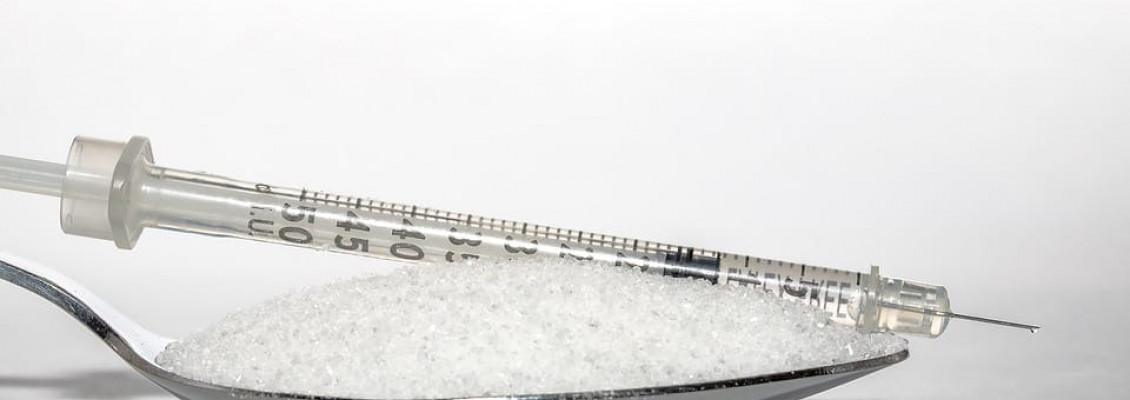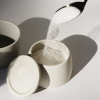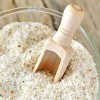
Endocrinologist Robert Lastig, a specialist in child metabolic
disorders, gave a scientific and popular lecture entitled “sugar: bitter truth at
the University of California, San Francisco, five years ago, in July 2009. Since
then, it has been viewed not only by half a hundred medical students, but almost
five million more people on YouTube. If you don't want to spend an hour and a half
watching, we translated and briefly outlined the main points of the legendary performance
of the most popular American doctor.
Obesity has nothing to do with free choice. No one chooses
to be fat, and no child chooses to be fat.
Obesity is not directly related to lack of movement. We see
an overweight epidemic among six-month-old babies who can't and don't have to move
much. And if you think it's a lack of movement, how do you explain it?
It's not really that we're eating more. We certainly eat more
than we used to. No one argues. Question: Why are we eating more? Teenagers eat
275 kilocalories a day and adults eat 300 to 330 kilocalories a day more than 20
years ago. But it's not just the quantity of food, it's the quality of food.
Our food is rich in substances that disrupt the exchange of
hormones responsible for the mechanisms of hunger and saturation. For example, leptin
is a hormone that is emitted by fatty tissue into the blood and tells our brains
— everything, thank you, we've eaten, we don't need any more. However, if people
suddenly eat 300 kcal more, the leptin does not work. So something in our endocrine
system isn't working.
What has broken down can be understood by looking at the composition
of these additional 300 kilocalories. What is this? Fat? No, we only eat 5 grams
more fat than we did 20 years ago. But we started eating 79 grams more carbohydrates.
Since the 1960 s, we have begun to limit fats, but the amount
of sugar and fructose in our diet has steadily increased over the past half century.
We started drinking 141 percent, one and a half times more sweet soda and one third
(35 percent) more fruit juices and other sweet drinks.
How did a bottle of Coke grow in 100 years?
In 1915, the standard bottle was 6.5 ounces. By drinking one
bottle a day, an ordinary person can recover by £8 a year. In 1955, the bottle almost
doubled — 10 ounces of coca cola, 12 pounds of extra weight a year, 20 ounces of
cola and 26 pounds of fat a year in 1992.
Where these extra pounds come from, it makes sense to look
at the composition of sweet soda.
What's in the Coca Cola?
Caffeine is a light stimulant that, among other things, increases
diuresis, that is, causes you to write more often and thus lose water.
Salt, lots of salt -- 55 mg in one jar. It's like drinking
pizza. What happens when you lose water and eat salt? You're even more thirsty.
Sugar. Why so much sugar? To disguise the salt. Does everyone
remember “New Coke 1985”? The new improved coca-cola formula has more sugar and
more caffeine.
A study by Roger Ludwig and colleagues published in Lancet
in 2001 shows the effects of 19 months of candy soda consumption. It turns out that
every extra sweetened drink per day in a year and a half raised the mass index by
0.24 (put simply, the amount of excess body fat increased by 95 percent.)
James et al, published in BMJ magazine in 2004, described
an experiment that merely compared the obesity rate of schoolchildren in two schools.
In the experimental school, the authors removed the soda machine and left everything
as it was in the test room. In the year that the experiment lasted, the level of
obesity did not change in the experimental school and increased by 27 percent in
the test school. Simply put, giving children access to sweet soda always increases
their weight.
Why? What's wrong with soda?
It contains high-fructose corn syrup. Each American consumes
an average of 28.5 kilograms of corn fruit syrup per year.
Fructose syrup is sweeter — about 120 sweets versus 100 in
sugar (173 in pure fructose).
It may seem that if syrup or fructose is sweeter, we eat less.
Actually, quite the contrary: sweet drinks and food make you eat more.
There's no difference between high-fructose corn syrup and
sugar. Both syrup and sugar are poison, both poisoning our bodies and destroying
our health. It's not just empty calories, it's poison. And I'll prove it to you.
Sugar or sugar disintegrates almost immediately into glucose
and fructose.
Prior to the beginning of the industrial food age, in the
early 19 th century, people received about 15 grams of fructose a day — mostly fruit,
honey, and other natural sweet products.
Before World War I, it was 16-24 grams a day, and after 1977-1978,
when the techniques of producing corn fructose syrup were introduced, its consumption
doubled to 37 grams a day.
And then the number of fructose doubled every few years. In
1994 it was already 54.7 g a day, and today it is even more.
I mean, we're not just eating anymore. We started eating more
sugar and fructose.
After the Japanese came up with the technology of producing
fructose syrup, the prices of sugar and fructose became much more stable and lower.
Manufacturers began to add sugar and fructose to everything. First, it's not expensive,
second, it fuels appetite, which means it makes you buy more.
Fruit juices have the same effect as soda: the more juice,
the more appetite. As early as 1972, Cambridge professor John Yudkin, in his book
Clean, White, and deadly, accurately described the adverse effects of added sugar
on the body. Everything he wrote about back in the early 1970 s is pure truth, repeatedly
confirmed by scientific evidence. However, his writings and popular books met with
great opposition and were not disseminated. Yudkin's main opponent was Ansel Keyes,
an American nutritionist, a low-fat propagandist, and a sugar advocate. As it later
turned out, Keyes' work was financed by food producers.
Case expressed an idea that until recently had been mainstream
in dietiology: fatty food increases the level of cholesterol in the blood, and cholesterol
causes atherosclerosis, and vascular and heart disease. This is nothing more than
a misconception.
We've all heard of “bad cholesterol,” which is called low
density lipoproteins in biochemistry. In fact, the situation is a little more complicated
because there are two types of LNP - a and B. Studies show that LNP-a is too light
and large, they are not involved in the formation of cholesterol plaques in the
vessels at all, and therefore have nothing to do with cardiovascular diseases at
all. But LNP-B is smaller and heavier, so they easily fall into precipitation on
the walls, participating in the blocking of the receptacles.
What do you have to do with fructose and sugar?
Recent studies show that when you eat a lot of sugar or fructose,
the level of type B LNP in your blood increases dramatically. It is LNP-B that is
involved in inflammation and the formation of cholesterol plaques on the surface
of the receptacles. Thus, LNP-B narrows the luminosity of the vessels and leads
to heart disease, heart attacks and other deadly conditions. In turn, fatty food
increases the level of LPPP-a, the most harmless LPPP that cannot be deposited in
the walls of vessels, but is used by the body as nutrient and building material.
What did we do in 1982?
First, we went on a high-carbohydrated diet called it low
fat. Non-fat industrial food would be disgusting if not for added sugar, which masks
taste deficiencies and caramelitates, makes the food more beautiful.
Secondly, we removed food fibers from food. In ancient times,
humans consumed about 200 to 300 grams of fiber a day. Today, the average man eats
12 grams. Why did we remove her from our diet? Because without fiber, food freezes
faster, prepares faster, absorbs faster and brings more pleasure.
Thirdly, we have replaced natural fat with margarine, rich
in trans-fats, which are now recommended for elimination from diet because they
have proven to cause inflammation, cancer and a lot of other diseases.
What'S the problem with fruit?
It caramels seven times easier than glucose. A dark brown
crust is formed on the grill, a similar process occurs on the inner surface of arteries
when atherosclerosis consumes fructose or sugar — even the brown color is the same.
Fructose, unlike glucose, does not suppress the release of
grain, a hormone of hunger. Simply put, it doesn't contribute to saturation. Food
and fructose drinks are not enough. So a child who drinks soda and fructose and
goes to McDonald's eats more than less.
Fructose doesn't stimulate insulin emissions. And if insulin
doesn't grow, so does leptin, a saturation hormone. And if the leptin doesn't grow,
the brain doesn't get a signal that you've eaten. So we eat more.
Finally, the metabolism of fructose in the liver is completely
different from glucose.
Fructose alone is enough to develop metabolic syndrome — a
bouquet of deadly diseases that includes obesity, type two diabetes, hypertension,
and cardiovascular disease.
Glucose differs dramatically from fructose in that surplus
glucose turns the liver into glycogen, such a folding material. Question: How many
glycogens can be deposited in the liver without damaging the organ? Answer: as much
as you want. There is no glycogen in the liver, its synthesis and deposition is
a perfectly healthy process.
There's also not a healthy process where glucose turns into
fat. This creates A LOW - density “phonp — lipoproteins — the ones that also refer
to “bad cholesterol,” causing atherosclerosis.
What happens when you metabolize two pieces of white bread
or a glass of orange juice
(in other words, 120 kilocalories of sugar). Sugar disintegrates
into two parts — glucose and fructose. Glucose is distributed throughout the body
because both muscles and the brain and other tissues can digest glucose. What's
going on with fruit? It stays in the liver because only the liver can digest it.
And in the liver, it endures many biochemical reactions that produce gout-inducing
substances and elevated blood pressure. Most importantly, however, most fructose
in the liver turns into fat, causing a disease called non-alcoholic fat hepatosis.
What do we call a substance that is not absorbed by our body
and only the liver is capable of decomposing it, causing a variety of disturbances
and problems in the body? We call it poison. And fructose fits that definition perfectly.
Acute ethyl alcohol intoxication has many consequences: suppression
of brain work, cooling, accelerated heartbeat, fatigue, respiratory suppression,
loss of movement control -- there's no point in listing, all students know exactly
what they're talking about. We know ethanol is poison, and there are a lot of restrictions
-- certain hours and licenses for sale, excise stamps -- all of this is necessary
to regulate the sale of alcohol, because everyone understands that alcohol is poisonous.
Fructose, in turn, does not have any of the above, because
the brain simply does not absorb fructose. We don't feel any acute intoxication
from fructose.
However, if one looks at chronic intoxication rather than
acute, the situation changes dramatically. Chronic intoxication of fructose, as
well as alcohol intoxication, causes hypertension, myocardial infarction, lipid
exchange disorders, pancreatitis, obesity, liver disorders, and addiction (if not
addiction). Simply put, chronic consumption of fructose is as hard on health as
chronic consumption of alcohol. If you think about it, there's a lot in common between
fructose and alcohol. How do we get alcohol? Sugar. In general, when sugar becomes
alcohol, at the level of biochemistry and metabolism in the human body, it has many
of its toxic properties. Anyway, ethanol and fructose are the same thing.
UCSF WATCH clinic recommendations:
Get rid of all the sweetened drinks — soda, juice, sweet potable
yogurts, sweet tea and coffee, lemonade, sugar and fructose sports drinks — to waste.
Just water and milk, unpleasant tea and coffee.
Eat unrefined carbohydrates rich in fiber. Fruit instead of
fruit juices, flour of rough grinding, bread with cuts, and so on.
Wait 20 minutes before taking the second batch.
Spend as much time on TV as you spend on physical activity
We did an experiment and found that these rules work well
— by observing them, a person is thinner. Then, excluding each of them, we found
out which of these rules is the key, i.e., without which rule the other three recommendations
do not work. Turns out, without the first one. If you don't eliminate sweet drinks
from your diet, you can't lose weight.
Why are physical stresses so important for weight loss? One
chocolate cookie contains as much calories as you burn from a 20-minute run. It
had nothing to do with calories. What are actually useful:
increases muscle sensitivity to insulin
reduces stress by reducing appetite, because stress and obesity
go hand in hand
changes liver biochemistry by creating healthy metabolism
Why is fiber or food fibers so important?
it reduces the absorption of carbohydrates in the intestine,
thereby reducing insulin emissions
increases the sense of fatigue
suppresses the suction of some free fatty acids in the gut.
As a result, intestinal bacteria turn them into short-chain fatty acids that suppress
insulin emissions. In short, food fibers are beneficial.
Fructosocization of America and the world
There are seven items on the MacDonald's menu that do not
contain fructose syrup:
Fries (lots of salt, starch and fat)
Fried potatoes (salt, grass and fat)
Chicken nuggets (salt, starch, fat)
Sausages
Diet Coke
Sugar-free coffee
Sugar-free tea
Few people limit themselves to this list, and even fewer people
eat the same potatoes or nuggets without sauce, and in added sugar sauces more than
enough to fuel appetite.














